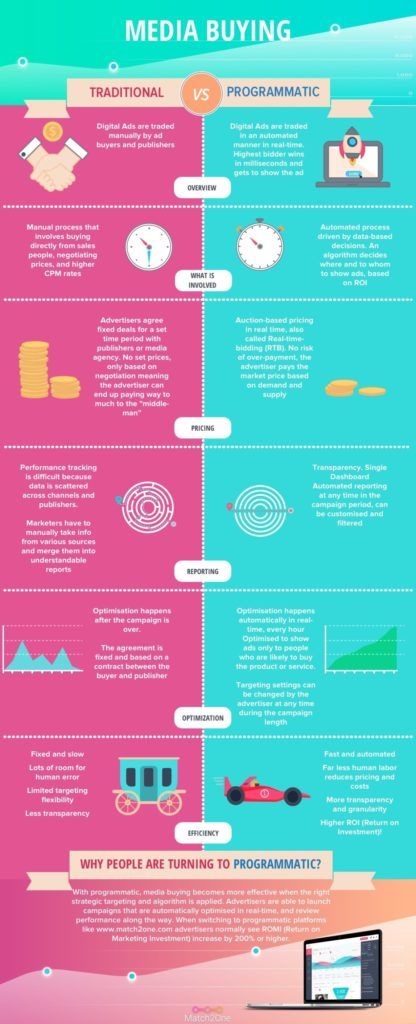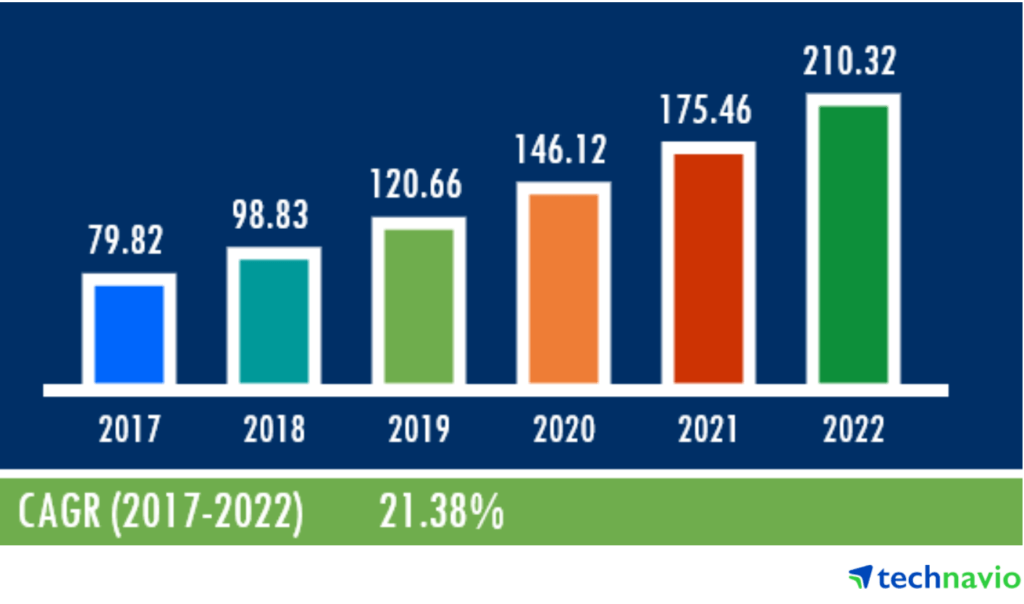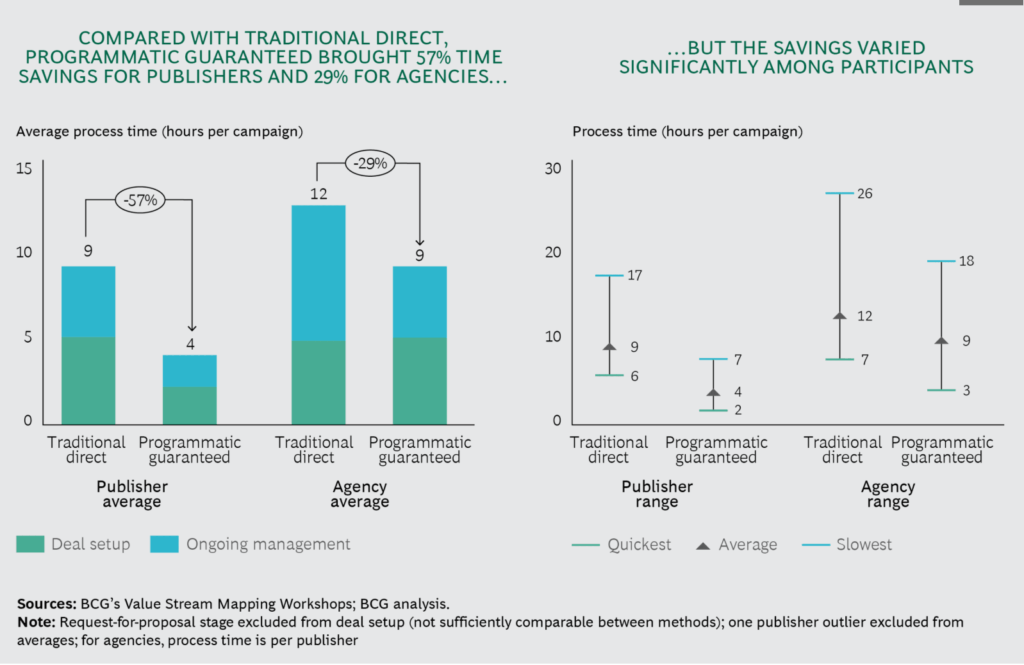Disrupting Donald Draper: Programmatic Ad-buying’s Effect on the Advertising Industry

Who wins and loses in the global shift to programmatic advertising?
Donald Draper, the protagonist of AMC’s hit 50s-era series Mad Men, is depicted as one of Madison Avenue’s smoothest advertising executives. He focuses on charm, style, and an innate understanding of the American consumer. Somehow, (in the show), he succeeds.
Modern advertising has changed so drastically that Don might find himself considerably out of date. Today’s advertising is more scientific and quantitative than ever before, and requires deep understanding of publisher metrics, customer behavior, and computer science. A large part of this is due to programmatic advertising, which has revolutionized the way marketers reach audiences through targeted digital ad placement [1].
What is programmatic advertising?
Programmatic advertising refers to the use of automated processes to buy, place, and optimize advertising. This is in contrast to the traditional model of advertising in which ad agencies (e.g., Ogilvy & Mather) or marketers (e.g., Kraft-Heinz) directly contract with publishers (e.g., ESPN.com). Exhibit 1 shows an overview of these two approaches.
Exhibit 1: Overview of traditional vs. programmatic advertising models [2]
Due to its real-time bidding structure, the programmatic approach is best suited for online advertisements. In 2017, global programmatic advertising spending totaled approximately $80 Billion – representing 45% of all online advertising, and 14% of all advertising [3]. The sector is also expected to grow rapidly. TechNavio, a market research firm, estimates that programmatic advertising will grow at a CAGR of 21% from 2017 to 2022, and come to represent $210 Billion, 29% of global ad spending [4]. It is clear the industry’s shift to programmatic advertising is significant and will continue into the future.
Exhibit 2: Global programmatic advertising market size, 2017-2022 [4]
How does programmatic advertising create value?
Programmatic advertising creates value for marketers by allowing them to target advertisements for maximum impact. For example, a company advertising de-icing salt might focus their ads on users who live in areas experiencing cold weather. By focusing advertising on their target consumers marketers can increase their return on investment. They also save valuable time, as shown in exhibit 3.
Programmatic advertising also creates value for publishers by ensuring that their inventory (i.e., ad space) is maximally utilized. Through the real-time bidding mechanism programmatic advertising ensures that inventory is most efficiently allocated to the highest bidder.
Finally, programmatic advertising creates value for consumers by showing them relevant, timely ads that may fill a genuine consumer need.
Exhibit 3: Time savings with programmatic advertising [5]
“The winners”
The shift to programmatic advertising has benefitted a number of sectors involved in measuring, analyzing, and optimizing advertising spending. Exhibit 3 shows several of these sectors and their role in programmatic advertising.
Exhibit 3: The programmatic media landscape [6]
Winner #1: Ad exchanges
Examples: Google’s DoubleClick Ad Exchange, AppNexus
Advertising exchanges run the real-time bidding process at the heart of programmatic advertising and are one of the most direct winners in its growth. Ad exchanges capture value by charging setup fees and commissions to the publishers seeking to sell inventory on the exchange.
Winner #2: Supply side platforms
Examples: Google AdX, Pubmatic
Supply side platforms, also called Yield Optimization Platforms, enable publishers to effectively manage their inventory and revenue on ad exchanges. By automating the sale of publishers’ ad inventory, they create value for publishers. Several software companies focus exclusively on this market segment and have benefitted from the rise of programmatic advertising.
Winner #3: Demand-side platforms
Examples: Amazon Advertising, DoubleClick BidManager, Brightroll, DataXu
Demand-side platforms allow marketers (e.g., Kraft-Heinz) to manage multiple ad and data exchange accounts to accomplish an advertising goal. For example, BrightRoll might help Kraft-Heinz optimize its advertising across five separate exchanges to maximally effect brand perceptions among 25-39-year-old females.
Winner #4: Third party data providers
Examples: Lotame, BlueKai, Exelate
Third party data providers help marketers and their demand-side platforms better identify their “targets.” The data that third party providers give – such as detailed consumer targeting data – helps marketers design better campaigns. Data providers capture some of this value by charging marketers access fees. These companies also frequently accept payment “in-kind” – i.e., they allow marketers to trade data on their customers in exchange for third party data [7].
“The Losers”
Programmatic advertising’s growth has negatively impacted a number of players in the traditional advertising model. In addition, the future promises more pain: programmatic advertising is expected to continue expanding, and will likely be introduced in advertising media currently considered off-limits (e.g., TV, radio, outdoor).
Loser #1: Media agencies
Examples: WPP, Omnicom, Publicis
Media agencies are the primary losers of the shift to programmatic advertising. Initially, media agencies saw programmatic advertising as a growth area; they quickly built staffs and expertise in programmatic campaign development. However, a series of scandals (involving programmatic ads showing up in less-than-desirable locations, coupled with inaccurate metrics) convinced many marketers to develop in-house programmatic advertising management capabilities. It is seen as unlikely that this business will return to the media agencies. Billings at WPP, the world’s largest media agency, declined 3.9% in 2017 [8].
Loser #2: Owners of other forms of “broadcast” media
Examples: TV station owners, radio station owners
The additional value created by programmatic advertising is likely to reduce the proportion of advertising spending allocated to traditional forms of broadcast media. While this effect will take a number of years to materialize, and can be offset by overall market growth, I believe that the market’s shift towards personalized, “narrowcast” media is likely to continue. Owners of broadcast media outlets will likely try to find alternate ways of targeting customers (e.g., through cable subscriptions). Once this is achieved, these media types are likely to join programmatic marketplaces.
Loser #3: Workers
Programmatic advertising requires less manual input and adjustment than traditional advertising, as shown in exhibit 3. This has led to a reduction in employee needs. These job losses may, in time, be offset by increased demand for data scientists, engineers, and other highly-trained computer professionals. However, the short term impact is a reduction in employment.
Exhibit 5: Job growth in the Media & Advertising sector [9]
Towards a more efficient marketplace
Programmatic advertising represents a new, more efficient process for buying, placing, and optimizing advertisements. In just a few years, programmatic ad-buying has become the majority of the online advertising market, and shows little sign of slowing. Over time I feel confident that the opportunities created by expanding programmatic advertising will unlock new ways for marketers and consumers to interact.
[1] https://medium.com/axialx/programmatic-advertising-explained-666c52978ea5
[2] https://www.match2one.com/blog/traditional-vs-programmatic-media-buying/
[5] https://www.bcg.com/en-us/publications/2018/guaranteed-opportunity-programmatic-advertising.aspx
[6] https://digilant.com/programmatic-buying-101-whats-the-difference-between-dsps-ad-networks/
[7] https://adage.com/lookbook/article/ad-exchange/needed-ad-exchanges-work/298394/
[8] https://sites.wpp.com/annualreports/2017//
[9] https://www.theatlantic.com/business/archive/2018/02/advertising-jobs-programmatic-tech/552629/








Great write up. Considering how efficient programmatic advertising is, I was surprised to see that it accounts for only 45% of online advertising right now. I’m curious to see where that number will top out at. Another random thought: with so many more advertising opportunities in the internet and smartphone age, I wonder if another offset to the loss of advertising jobs is the amount of people needed to create that content.
Great post on an important industry that’s often overlooked. I wonder how the internet ad industry will evolve over time. I believe click rates are extremely low, people both dislike ads and ignore them almost automatically, and also dislike ads that are ‘creepy’, in that they know so much about the customer (although some call these ads ‘more relevant’). Given the negative landscape, I wonder if the online ad industry will re-imagine itself to be more customer friendly, or if more sites will attempt to monetize with something other than ads.
Thanks for this insightful piece. While I am thrilled by the fact that pragmatic advertising increase market efficiency and creates value on both the supply and the demand side, I wonder if this is enough to “disintermediate” ad agencies completely. I would imagine that they could still create value with their experience and human “intuitions,” especially with the larger and more strategic assignments. I am hopeful that eventually even these more nuanced judggement calls could be automated as technologies develop, but I have a fear that ad agencies may be eliminated too early and certain advertisers may suffer as a result.
Hi Ganesh,
I really enjoyed your blog. I take it that you have an affinity for advertising as I recall you made a comment about how you enjoy relevantly targeted ads during our Facebook case.
I am very persuaded by your blog that programatic advertising is a more effective than traditional advertising. Why do you think that programatic advertising only accounts for 45% of global advertising and not a larger share?
Excellent post!
Well Researched and so much helpful. there are many other AdTech like Kritter which is highly secure and affordable too.